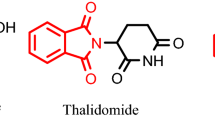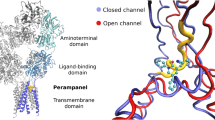Abstract
Gamma-aminobutyric acid (GABA, gammaAbu), an unsubstituted gamma-amino acid, is an important inhibitory neurotransmitter in the mammalian brain. The role of GABA in the treatment of epilepsy has triggered a great deal of interest in substituted gamma-amino acids, which may serve as GABA analogs, acting as inhibitors of GABA aminotransferase. Pregabalin (Pgn), a well-known antiepileptic drug, is also a beta-substituted gamma3-amino acid. Pregabalin and gamma4Leu, an isomer of the pregabalin (Pgn) residue, both carrying the same isobutyryl group in the side chain, were introduced in the present study to have a comparison of their respective conformational differences as well as their role in influencing the overall conformation of the peptides, they are inserted in. Two alpha–gamma–alpha–alpha–alpha hybrid pentapeptides were designed that contain Aib-Pgn and Aib-gamma4Leu segments at the N terminus. The study provides a detailed analysis of the conformational properties and non-covalent interactions observed in the crystal structures of two polymorphs of the pentapeptide monohydrate, Boc-Aib-(S)Pgn-Leu-Phe-Val-OMe (C38H63N5O8·H2O) and the isomeric pentapeptide, Boc-Aib-gamma4(R)Leu-Leu-Phe-Val-OMe (C38H63N5O8), obtained from single crystal X-ray diffraction experiments.






Similar content being viewed by others
References
Basuroy K, Dinesh B, Shamala N, Balaram P (2012) Structural characterization of backbone-expanded helices in hybrid peptides: (αγ)n and (αβ)n sequences with unconstrained β and γ homologues of L-Val. Angew Chem Int Ed 51:8736–8739
Basuroy K, Dinesh B, Shamala N, Balaram P (2013) Promotion of folding in hybrid peptides through unconstrained γ residues: structural characterization of helices in (αγγ)n and (αγα)n sequences. Angew Chem Int Ed 52:3136–3139
Basuroy K, Dinesh B, Reddy MB, Chandrappa S, Raghothama S, Shamala N, Balaram P (2013) Unconstrained homooligomeric γ-peptides show high propensity for C14 helix formation. Org Lett 15:4866–4869
Brenner M, Seebach D (1999) Enantioselective preparation of γ‐amino acids and γ‐lactams from nitro olefins and carboxylic acids, with the valine‐derived 4‐Isopropyl‐5,5‐diphenyl‐1,3‐oxazolidin‐2‐one as an auxiliary. Helv Chim Acta 82:2365–2379
Chatterjee S, Vasudev PG, Raghothama S, Ramakrishnan C, Shamala N, Balaram P (2009) Expanding the peptide β-turn in αγ hybrid sequences: 12 atom hydrogen bonded helical and hairpin turns. J Am Chem Soc 131:5956–5965
Dinesh B, Basuroy K, Shamala N, Balaram P (2012) Structural characterization of folded pentapeptides containing centrally positioned β(R)Val, γ(R)Val and γ(S)Val residues. Tetrhedron 68:4374–4380
Hanessian S, Luo X, Schaum R, Michnick S (1998) Design of secondary structures in unnatural peptides: stable helical γ-tetra-, hexa-, and octapeptides and consequences of α-substitution. J Am Chem Soc 120:8569–8570
Haramura M, Tanaka A, Akimoto T, Hirayama N (2004) Crystal structure of vigabatrin. Anal Sci 20:9–10
Hintermann T, Gademann K, Bernhard J, Seebach D (1998) γ‐peptides forming more stable secondary structures than α‐peptides: synthesis and helical nmr‐solution structure of the γ‐hexapeptide analog of H‐(Val‐Ala‐Leu) 2‐OH. Helv Chim Acta 81:983–1002
Jadhav SV, Misrra R, Singh SK, Gopi HN (2013) Efficient access to enantiopure γ4‐amino acids with proteinogenic side‐chains and structural investigation of γ4‐Asn and γ4‐Ser in hybrid peptide helices. Chem Eur J 19:16256–16262
Nanavati SM, Silverman RB (1989) Design of potential anticonvulsant agents: mechanistic classification of GABA aminotransferase inactivators. J Med Chem 32:2413–2421
Pluncinska K, Liberek B (1987) Synthesis of diazoketones derived from α-amino acids; problem of side reactions. Tetrhedron 43:3509–3517
Samas B, Wang W, Godrej DB (2007) 1:1 cocrystal of (S)-3-(ammoniomethyl)-5-methylhexanoate and (S)-mandelic acid. Acta Cryst E63:o3938–o3938
Schneider TR, Sheldrick GM (2002) Substructure solution with SHELXD. Acta Cryst D 58:1772–1779
Seebach D, Beck AK, Bierbaum DJ (2004) The world of β‐ and γ‐peptides comprised of homologated proteinogenic amino acids and other components. Chem Biodivers 1:1111–1239
Sheldrick GM (1997) SHELXS-97 program for crystal structure solution. Universität Göttingen, Göttingen
Sheldrick GM (2008) A short history of SHELX. Acta Cryst A64:112–122
Silverman RB (2008) From basic science to blockbuster drug: the discovery of Lyrica. Angew Chem Int Ed 47:3500–3504
Silverman RB (2012) The 2011 E. B. Hershberg Award for important discoveries in medicinally active substances: (1S,3S)-3-amino-4- difluoromethylenyl-1-cyclopentanoic acid (CPP-115), a GABA aminotransferase inactivator and new treatment for drug addiction and infantile spasms. J Med Chem 55:567–575
Sonti R, Dinesh B, Basuroy K, Raghothama S, Shamala N, Balaram P (2014) C12 helices in long hybrid (αγ)n peptides composed entirely of unconstrained residues with proteinogenic side chains. Org Lett 16:1656–1659
Vasudev PG, Chatterjee S, Shamala N, Balaram P (2009) Gabapentin: a stereochemically constrained γ amino acid residue in hybrid peptide design. Acc Chem Res 42:1628–1639
Vasudev PG, Chatterjee S, Shamala N, Balaram P (2011) Structural chemistry of peptides containing backbone expanded amino acid residues: conformational features of β, γ, and hybrid peptides. Chem Rev 111:657–687
Venu N, Vishweshwar P, Ram T, Surya D, Bhattacharya A (2007) (S)-3-(ammoniomethyl)-5-methylhexanoate (pregabalin). Acta Cryst C63:o306–o308
Author information
Authors and Affiliations
Corresponding author
Ethics declarations
Conflict of interest
The authors declare that they have no conflict of interest.
Ethical approval
For the present study, there were no human or animal participants used as subjects in this study. Therefore, formal consent wass not required.
Informed consent
Informed consent was obtained from all individual participants included in the study.
Additional information
Handling Editor: M. S. Palma.
Publisher's Note
Springer Nature remains neutral with regard to jurisdictional claims in published maps and institutional affiliations.
Rights and permissions
About this article
Cite this article
Basuroy, K., Kantharaju, K., Aravinda, S. et al. Pregabalin peptides: conformational comparison of γ3- and γ4-substituted γ-amino acids in αγααα pentapeptides. Amino Acids 51, 1297–1306 (2019). https://doi.org/10.1007/s00726-019-02768-5
Received:
Accepted:
Published:
Issue Date:
DOI: https://doi.org/10.1007/s00726-019-02768-5




